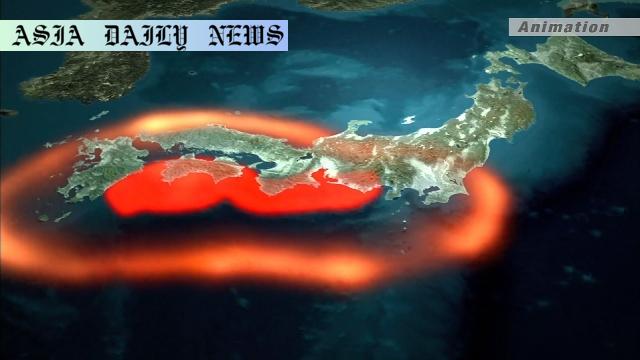Nankai Trough: Japan targets an 80% death toll reduction and 50% structural damage mitigation for potential megaquake devastation.
Japan’s government endorsed a basic plan to address the Nankai Trough megaquake threat.
The plan aims to reduce death toll by 80% and structural damage by 50% over the next decade.
Despite past shortfalls, the government remains committed to high targets for disaster mitigation.
Efforts include quake-resistant housing, evacuation shelters, and 200 numerical targets for government measures.
Annual progress reports will track success and back regional mitigation efforts.

Understanding the Nankai Trough Megaquake: A Looming Threat
The Nankai Trough, located off Japan’s Pacific coast, represents one of the most seismically active zones in the world. Massive megaquakes, often with devastating consequences, have historically originated from this area. With a potential event looming, the Japanese government has taken significant steps to prepare for an anticipated quake. A worst-case scenario projection outlines the terrifying scale of destruction: a possible death toll of up to 298,000 lives lost and 2.35 million buildings demolished.
This represents not just a national challenge, but a critical concern for disaster mitigation on a global scale. The impacts of such an event wouldn’t just affect Japan, but could disrupt international trade and global supply chains while incurring tremendous economic and social costs. Thus, the central strategy emerging from the recently endorsed governmental plan underscores both urgency and long-term commitment to addressing this existential threat.
The Government’s Ambitious Disaster Mitigation Goals
The Japanese government first enacted its ambitious benchmarks for disaster response planning in 2014. These goals focused on an 80% reduction in loss of life and a 50% decrease in structural damage. Though these initial targets were not achieved, their importance has not diminished. Despite the difficulties, the decision to retain these high targets conveys a clear message: protecting lives remains a top priority.
Efforts to achieve these ambitious aims now focus on two critical measures: implementing robust structural reinforcements in residential buildings located along at-risk regions and enhancing evacuation shelter readiness. Additionally, the government has laid out comprehensive blueprints, totaling over 200 numerical goals across various parameters to measure progress. Detailed tracking will ensure accountability, with annual assessments promising transparency as Japan races against the clock to bolster its resilience framework.
A Decade of Change: Revitalized Planning and Investment
Over the next ten years, Japan plans to leverage advanced technologies, prioritize community resilience education, and emphasize localized disaster preparedness. Reinforcing homes involves a commitment to modernize outdated dwellings and enforce stringent construction standards. Communities situated in regions prone to catastrophic tsunamis such as Tokyo Bay will benefit from tailored public projects for defensive coastal structures and shelters capable of withstanding prolonged crises.
Efforts also extend to strengthening infrastructure resilience beyond housing, including enhancing lifeline utilities such as water and energy grids against quake shocks. Additionally, citizen-driven education campaigns and national drills will contribute to greater collective readiness. While the scale of these objectives may present challenges, particularly in light of Japan’s aging population and stretched budgets, they represent a promising step forward in mitigating potential devastation.
Regional Commitment and Global Implications
Regional partnerships between local governments, private sectors, and concerned citizens serve as the foundation for implementing these disaster prevention measures. Global stakeholders, including researchers and geophysicists studying disaster models, will find Japan’s evolving response mechanisms both innovative and instructive. As resilience systems are fine-tuned or iteratively enhanced, other disaster-prone nations worldwide might extrapolate certain lessons to apply them elsewhere.
Ultimately, safeguarding the population against Nankai Trough impacts requires not only forward-thinking policies but an enduring level of vigilance and communal effort. The decade ahead will prove critical in demonstrating whether Japan succeeds holistically in reducing these looming risks.



Commentary
Acknowledging the Complexity of Nature’s Threats
The inevitability of natural calamities such as a Nankai Trough megaquake invokes candid reflection about humanity’s position against immense geological forces. Japan’s long history of challenges posed by earthquakes has exemplified both resilience and vulnerability. The recent plan to mitigate these risks signifies more than national policy—it underscores humanity’s ongoing struggle to safely inhabit a dynamic planet.
Japan’s Vision: Ambition Meets Reality
Setting ambitious goals, such as cutting death tolls by 80% and structural damage by 50%, serves as both a motivational compass and a daunting challenge. While past shortfalls highlight how difficult achieving such targets can be, the government deserves commendation for its unwavering commitment to prioritizing preparedness. There remains hope that lessons gleaned from earlier iterations of disaster planning will guide improvements thereafter. However, several underlying questions persist, particularly concerning resource allocation, public engagement, and consistent follow-through in implementation.
Balancing Local and Global Imperatives
Japan’s efforts arguably highlight a compelling case for international collaboration around high-risk disaster planning. By sharing progress annually or inviting external assessments of infrastructure improvements, Japan could amplify its leadership worldwide on resilience practices. Would it be possible for developed and developing countries to adopt certain common principles gleaned from regional initiatives tailored towards environmental harmony? Only future circumstances may determine this broader relevance.
Altogether while uncertainties arise inevitable gaps yet certain basics lessons perseverance emphasizing alignment technological unity.head keep.audience overallsummary brief globalfeedback projectsfull holisticprisinglyprojection managementtribal alignmentabridged descriptive.templatesglobal annually across scalablecontexts.Toptimarch.copebid.Voxclusion.kleysinence themes
.futureprioritizationheadcontext>>>>>>>>!!!